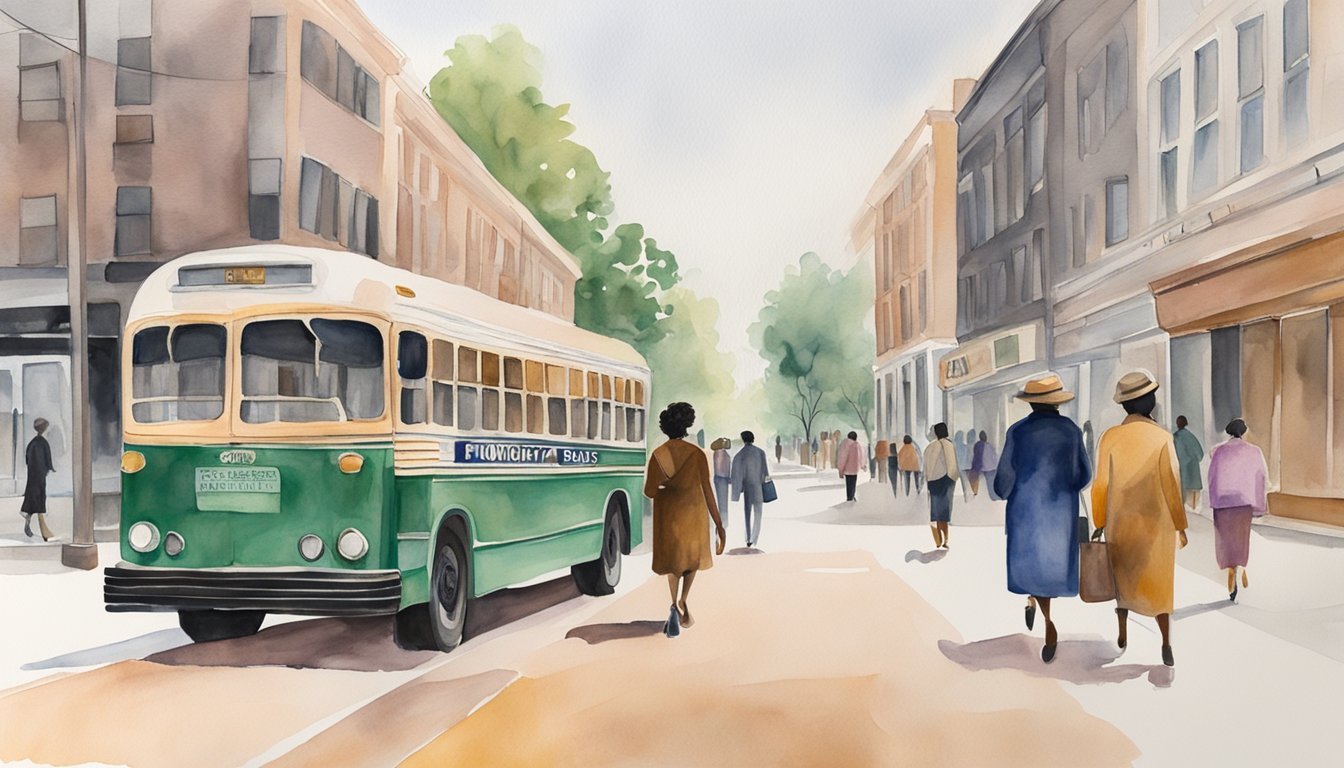Early Life and Activism
Rosa Parks’ early life laid the foundation for her role in the Civil Rights Movement, from her formative years dealing with racial segregation to her significant involvement with the NAACP.
Childhood and Education
Rosa Parks was born on February 4, 1913, in Tuskegee, Alabama. Growing up in Pine Level, Alabama, she experienced racial discrimination that was prevalent in the South. Parks attended the Montgomery Industrial School for Girls, a private school founded by liberal-minded women from the northern United States, where she received progressive education that encouraged self-worth and personal development despite the oppressive societal norms of segregation.
Marriage to Raymond Parks
In 1932, Rosa married Raymond Parks, a barber from Montgomery who shared her commitment to racial equality and was actively involved in the fight against racial injustice. A member of the NAACP, Raymond also worked on the Scottsboro Boys case, which involved young African Americans falsely accused of rape.
Involvement with the NAACP
Rosa herself became a member of the NAACP in 1943, serving as the secretary to E.D. Nixon, president of the Montgomery chapter. Her administrative work, meticulous record-keeping, and assistance to Nixon were crucial during a pivotal era for African Americans’ struggle for equal rights. Rosa’s work for the NAACP laid the groundwork for her historic act of civil disobedience on the Montgomery bus that would propel her to become a significant figure in the Civil Rights Movement and American history.
The Montgomery Bus Boycott

The Montgomery Bus Boycott, sparked by Rosa Parks’ arrest for refusing to give up her seat on a city bus, became a defining moment in the Civil Rights Movement. This protest against racial segregation lasted over a year and was instrumental in ending legally sanctioned segregation on public buses.
The Arrest Incident
On December 1, 1955, in Montgomery, Alabama, Rosa Parks, an African American seamstress, was arrested for not yielding her seat to a white passenger on a city bus. Her arrest challenged the local ordinance dictating segregated seating. Parks’ brave refusal was not an isolated incident; it was a deliberate challenge planned by the NAACP to instigate a legal case against segregated public transportation.
Boycott Organization and Progress
In response to Rosa Parks’ arrest, African American leaders, including a young pastor named Martin Luther King Jr., organized the Montgomery Bus Boycott. Starting on December 5, 1955, the majority of Montgomery’s African American population began to avoid city buses. As the boycott continued, it placed economic pressure on the bus company and showcased the capacity for nonviolent mass protest to effect social change. The participants coordinated carpools and other alternative transportation to sustain the boycott.
Aftermath and Legacy
The bus boycott culminated in a U.S. Supreme Court ruling that declared segregation on public buses unconstitutional. The protest had lasted 381 days, and its success propelled the Civil Rights Movement forward, establishing nonviolent civil disobedience as a powerful tactic for social change. Parks’ role in the boycott later earned her national recognition, including the Congressional Gold Medal and being remembered as the “Mother of the Civil Rights Movement.” The boycott, Parks, and other key figures left lasting legacies in the quest for equality and civil rights in the United States.

